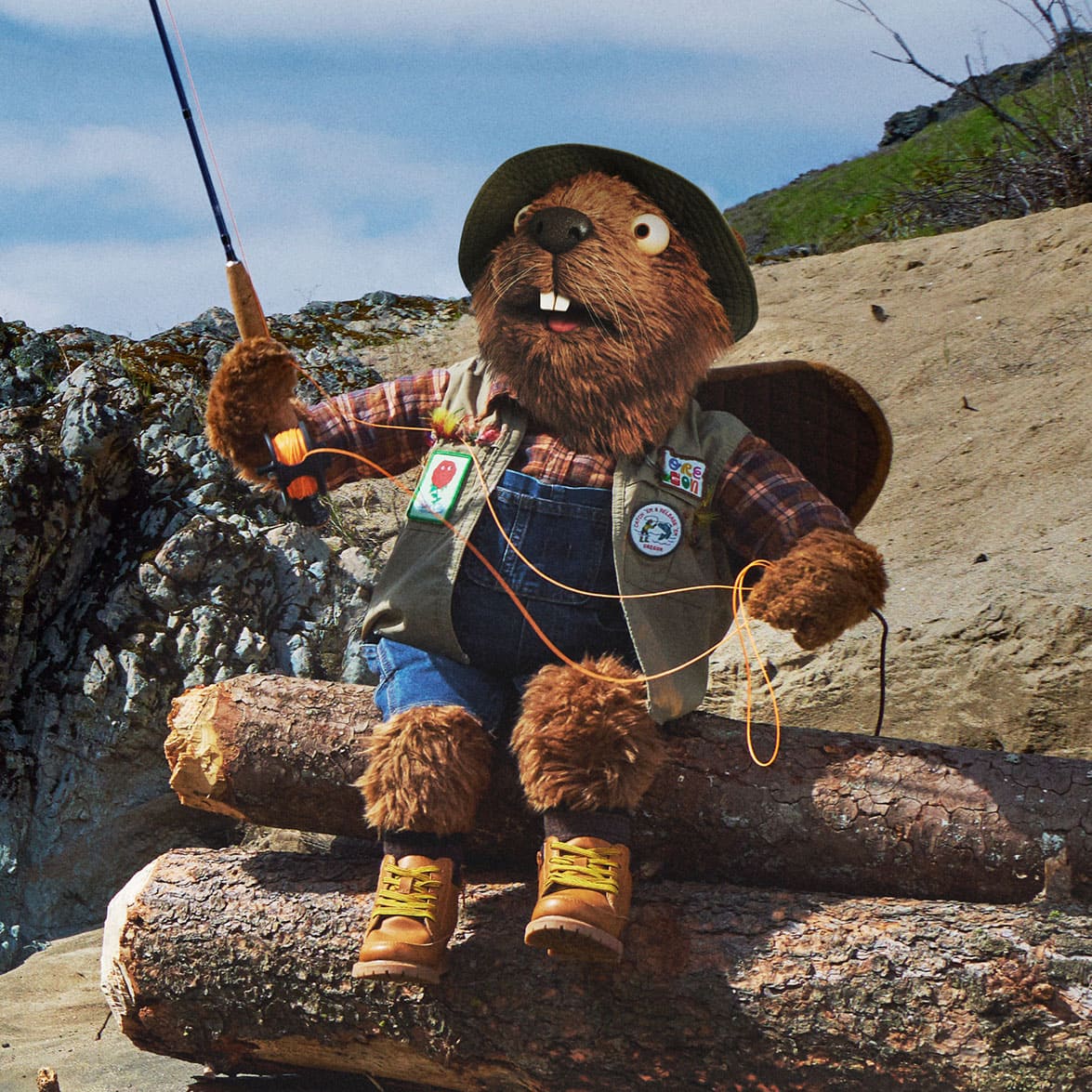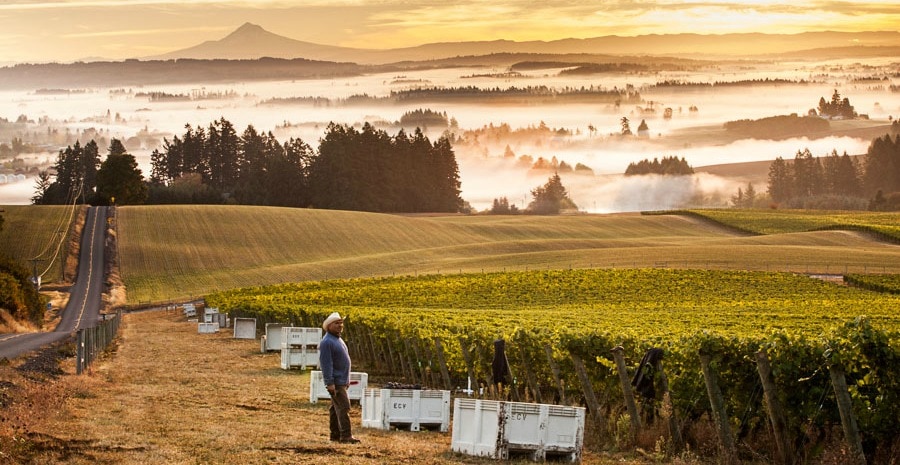
Elk Cove: A Study In Audacity
In 1974 Pat and Joe Campbell moved to a rugged sprawl of land on the hills near Gaston. They had three children, a house trailer, and a notion that the rocky soil that resisted efforts to grow fruit trees and grains could be persuaded to yield wine grapes. Forty years later, their audacious experiment is one of Oregon’s most distinctive wineries, and still very much a family affair: Pat and Joe’s son Adam, now winemaker/co-owner, crafts multiple 90+ point vintages; his younger sister Anna is the winery’s creative director. Much of the estate remains covered in evergreen forests and soaring oak trees, providing ample habitat for wildlife and a matchless setting for a glass of wine.
Named for: a herd of elk that wintered on the land during the Campbell’s first year there
Must try: their single-block Roosevelt Pinot Noir
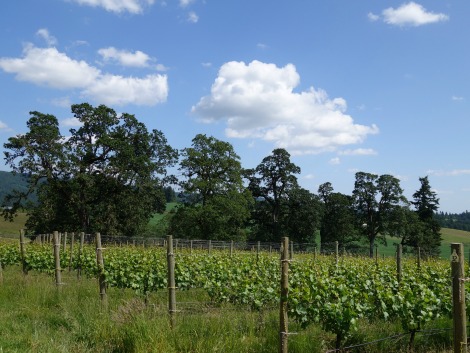
Ghost Hill Cellars: Living History
Mike and Drenda Bayliss were spring cleaning the barn when they found two bottles of amber liquid. “My dad and a neighbour had a still during Prohibition,” Mike explains with a wry grin. “The neighbour had a milk route. He’d deliver the milk and something to go with it.” The Bayliss family bought the Ghost Hill Cellars land in 1906 and he’s the third generation to farm it. Through the years they grew wheat, oats, corn and hay – some of which went to make bootleg whiskey – and raised sheep and cattle. Mike wanted to plant grapes in the ’70s but his father thought wine was “silly”. Years later, Drenda and Mike realized that wine grapes were their best chance to keep the land as a working farm. Whatever old man Bayliss might think, he’d be proud to see another generation coaxing good spirits from the land.
Named for: the ghost of a murdered prospector rumoured to haunt the land.
Must try: the Prospector’s Reserve Pinot Noir
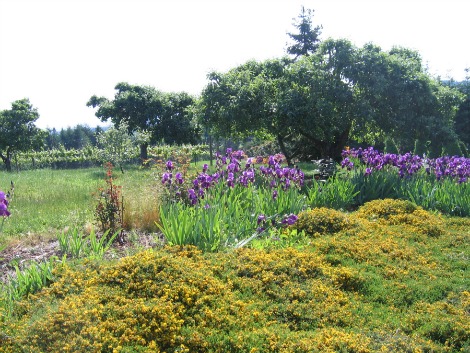
A Blooming Hill Vineyard: Wine With A View
Getting off the main roads is one of the best ways to discover Oregon. A Blooming Hill Vineyard is not far from Cornelius, in the foothills of the Chehalem Mountains. The short, steep drive to the estate is rewarded with vistas of immaculate vineyards bordered by luxurious banks of flowers. Jim Witte was a TV producer in New York and Hollywood; wife Holly a fundraiser from Brooklyn via Seattle. Together, they’ve turned the basement of their home into a cosy, pub-style tasting room that invites guests to relax and enjoy a glass wine. On sunny days visitors can wander outside, admiring the elegant Quarter Horses and Thoroughbreds that Jim breeds and raises, and gnarled beauty of the apple, pear and plum trees that dot the garden. It’s a long way from their previous lives, and proof that it’s never too late to follow your dreams.
Named for: the spectacular scenery
Must try: their multi-award winning 2010 pinot noir
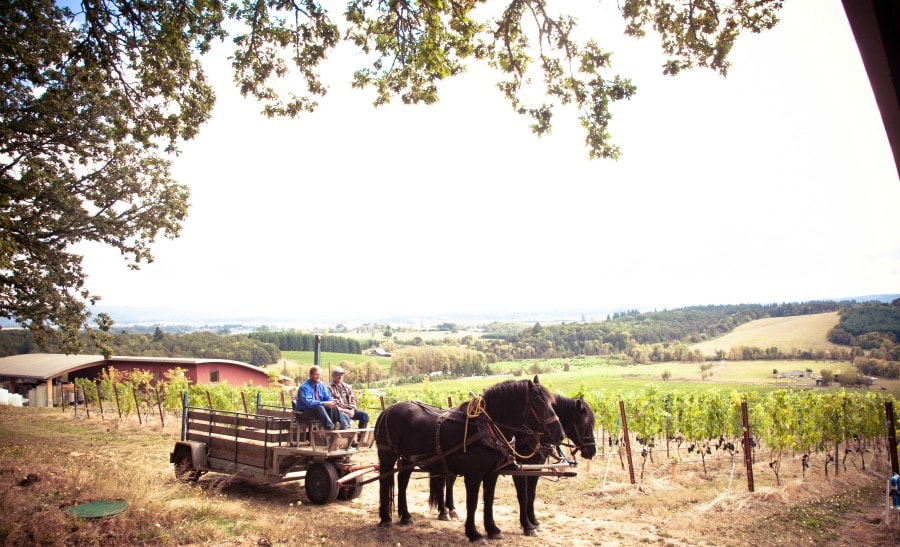
Illahe Vineyards: Best of Old and New
Illahe exemplifies the graciousness of historic winemaking methods. There’s the pole barn, built by hand several years ago, the teams of horses they use to plow and mow the vineyards, winemaker Brad Ford’s traditional techniques. He doesn’t use enzymes or additives; doesn’t fine or filter the wine. Some lots are made entirely by hand with no electricity or mechanization. They use wooden basket presses and age their wines in French and Oregon oak. The other side of the Illahe story is that Brad is an organic chemistry whiz. His father Lowell, who co-owns the vineyard with wife Pauline, founded Chemeketa Community College’s hugely influential wine studies program. Brad’s wife Bethany, the winery’s national sales manager, keeps a good humoured eye on the balance between old and new – ensuring their classically-crafted wines are represented online and across the country.
Named for: a Chinook word meaning “earth”, “place” or “soil”
Must try: the Project 1899 Pinot Noir, made using pre-Industrial methods
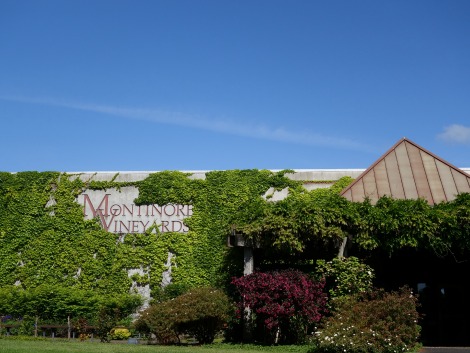
Montinore: From Italy to Oregon
As a boy, Montinore owner Rudy Marchesi planted a vegetable patch at his grandparent’s house in the Bronx. They had a big garden, fruit trees and, during Prohibition, his grandfather bought barrels of grapes from California and made wine for fellow Italian immigrants. Years later, Rudy, who was studying psychology at college in California, bought a half-barrel of grapes and called his granddad for advice on how to turn it into wine. From that beginning, he developed a fascination with winemaking and culture, and for many years owned a small vineyard on the East Coast. His daughter studied at Reed College, which led him to Oregon and eventually to Montinore. He took over the estate in 2005 and converted it to biodynamic farming – a precise, esoteric “more organic than organic” agricultural method. Montinore’s nationally-acclaimed wines are the latest chapter in a long, proud family tradition.
Named for: the original owners
Must try: the Almost Dry Riesling
